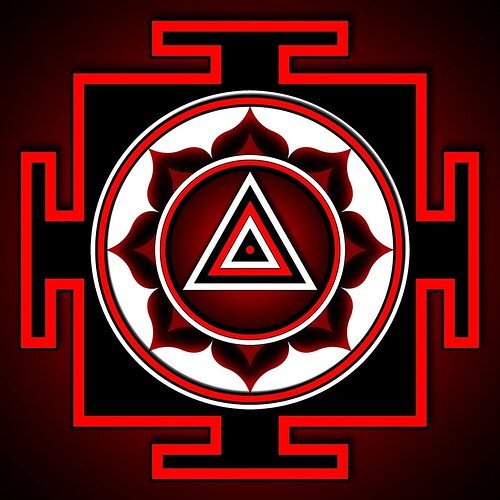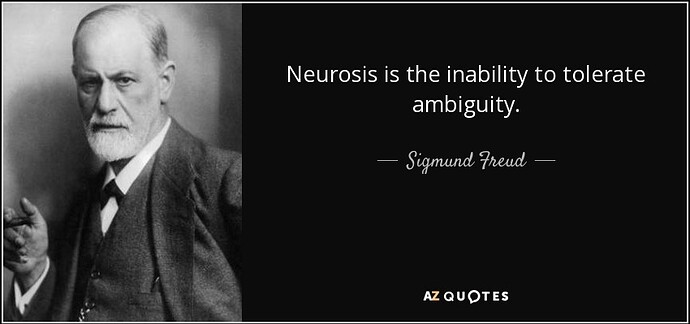More to the point, perhaps, Crowley says:
“To attain the Grade of Magister Templi, he [the Adept] must perform two tasks; the emancipation from thought by putting each idea against its opposite, and refusing to prefer either; and the consecration of himself as a pure vehicle for the influence of the order to which he aspires.
He must then decide upon the critical adventure of our Order [i.e., crossing the Abyss.]” (“One Star In Sight”.)
The said two tasks correspond to the Lovers (or Brothers) and the Chariot, respectively. Yet elsewhere, Crowley writes:
“[F]or this is BABALON under the power of the Magician, that she hath submitted herself unto the work; and she guardeth the Abyss. And in her is a perfect purity of that which is above [i.e., Kether]; yet she is sent as the Redeemer [i.e., Tiphareth] to them that are below. For there is no other way into the Supernal Mystery but through her, and the Beast on which she rideth; and the Magician is set beyond her to deceive the brothers of blackness, lest they should make unto themselves a crown; for if there were two crowns, then should Ygdrasil, that ancient tree, be cast out into the Abyss, uprooted and cast down into the Outermost Abyss, and the Arcanum which is in the Adytum should be profaned; and the Ark should be touched, and the Lodge spied upon by them that are not masters, and the bread of the Sacrament should be the dung of Choronzon; and the wine of the Sacrament should be the water of Choronzon; and the incense should be dispersion; and the fire upon the Altar should be hate.” (The Vision and the Voice, “ZON”.)
There is no other way into the Supernal Mystery but through—Binah? No, the High Priestess! It’s not that the Exempt Adept attains to Binah by taking both the path from Minor Adept to Master of the Temple (the Lovers) and the path from Major Adept to Master of the Temple, but that he attains to Kether by taking the path from Adept to Ipsissimus… Yet again in Liber 418, the 3rd Aethyr, Crowley writes:
“The Seer was physically overwhelmed by the horror of this experience [not attaining to Binah, but beyond Binah, so to say]. It may seem surprising that such phenomena should occur above the Abyss. But this Lilith is a positive form created by the Magus; whereas, Choronzon is the breaking-up of all coherence. Here also is a mystery of mysteries. Lilith is truly Babalon, as imagined by this energy of Mayan [i.e., of the Magician].”
Precisely for this, that such phenomena shall occur above the Abyss, is the Magician set beyond Babalon, Will beyond Love, Supernal beyond Supernal;
“BABALON is thy fortress against the iniquity of the Abyss, for[!] the iniquity of that which bindeth her unto the Crown, and barreth her from the Crown; for not until thou art made one with CHAOS [Chokmah, Ginnungagap] canst thou begin that last, that most terrible projection, the three-fold Regimen which alone constitutes the Great Work.
For Choronzon is as it were the shell or excrement of these three paths, and therefore is his head raised unto Daäth, and therefore have the Black Brotherhood declared him to be the child of Wisdom and Understanding, who is but the bastard of the Svastika.” (op.cit.)
The Svastika symbolizes the number 4. Daäth would be the 1 that is not the 3 or the 2. It would therefore form a 2 that is not a 1 or a 3.
Now one may well think that, to the Black Brothers, the Tree looks like this:
D
5_4
6
8_7
9
10
But the whole point is that they don’t transcend duality. Therefore:
3_2
5_4
6
8_7
9
10
The true Tree is actually like this:
1
5_4
6
8_7
9
10
Or:
3
5_4
6
8_7
9
10
Or:
2
5_4
6
8_7
9
10
Let’s take the middle one, with the 3 on top. The Magician or Magus is set beyond the top to deceive the brothers of blackness. That’s how we get this:
3_2
5_4
6
8_7
9
10
Or:
1
D
5_4
6
8_7
9
10
This latter visualization throws light on the words, “then should Ygdrasil, that ancient tree, be cast out into the Abyss, uprooted and cast down” etc.:
10
9
8_7
6
5_4
D
1
Note that this is not
10
9
7_8
6
4_5
D
1
For then the brothers would have understood that
“…all the symbols are interchangeable, for each one containeth in itself its own opposite. And this is the great Mystery of the Supernals that are beyond the Abyss. For below the Abyss, contradiction is division; but above the Abyss, contradiction is Unity. And there could be nothing true except by virtue of the contradiction that is contained in itself.” (The 5th Aethyr, as quoted in Little Essays toward Truth, “Truth”.)
To be sure, it is also said there that
“[the seer’s] Kether is dissolved in Ain Soph.”
So the best visualization may be this:
5_4
6
8_7
9
10
Or:
4_5
6
7_8
9
01
https://en.wikipedia.org/wiki/Babalon#/media/File:Whore-of-babylon-blake-1809.jpg

